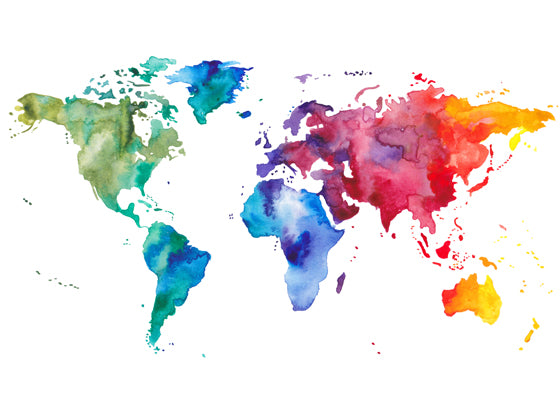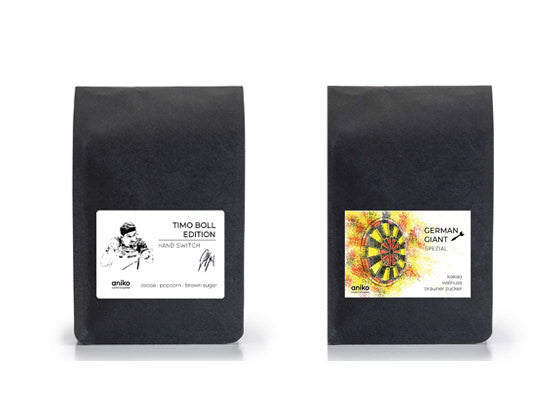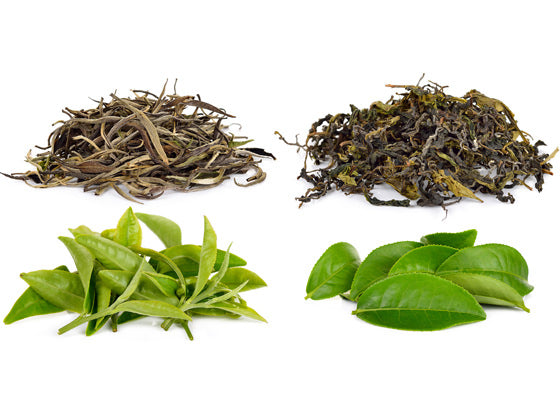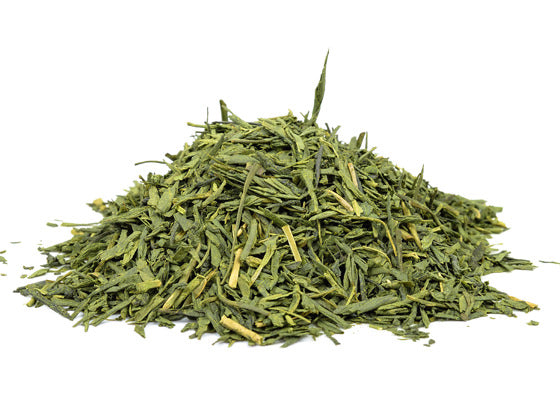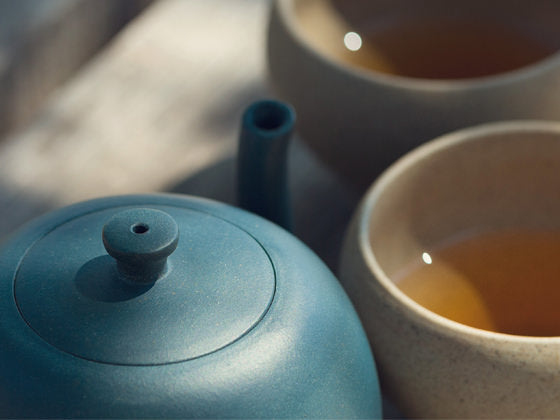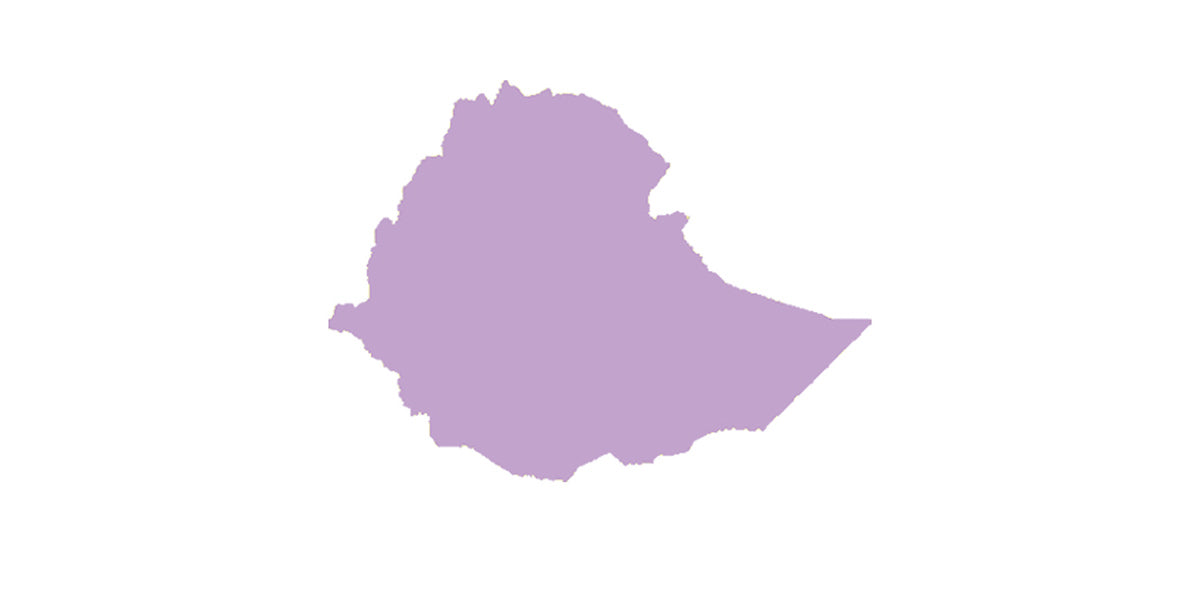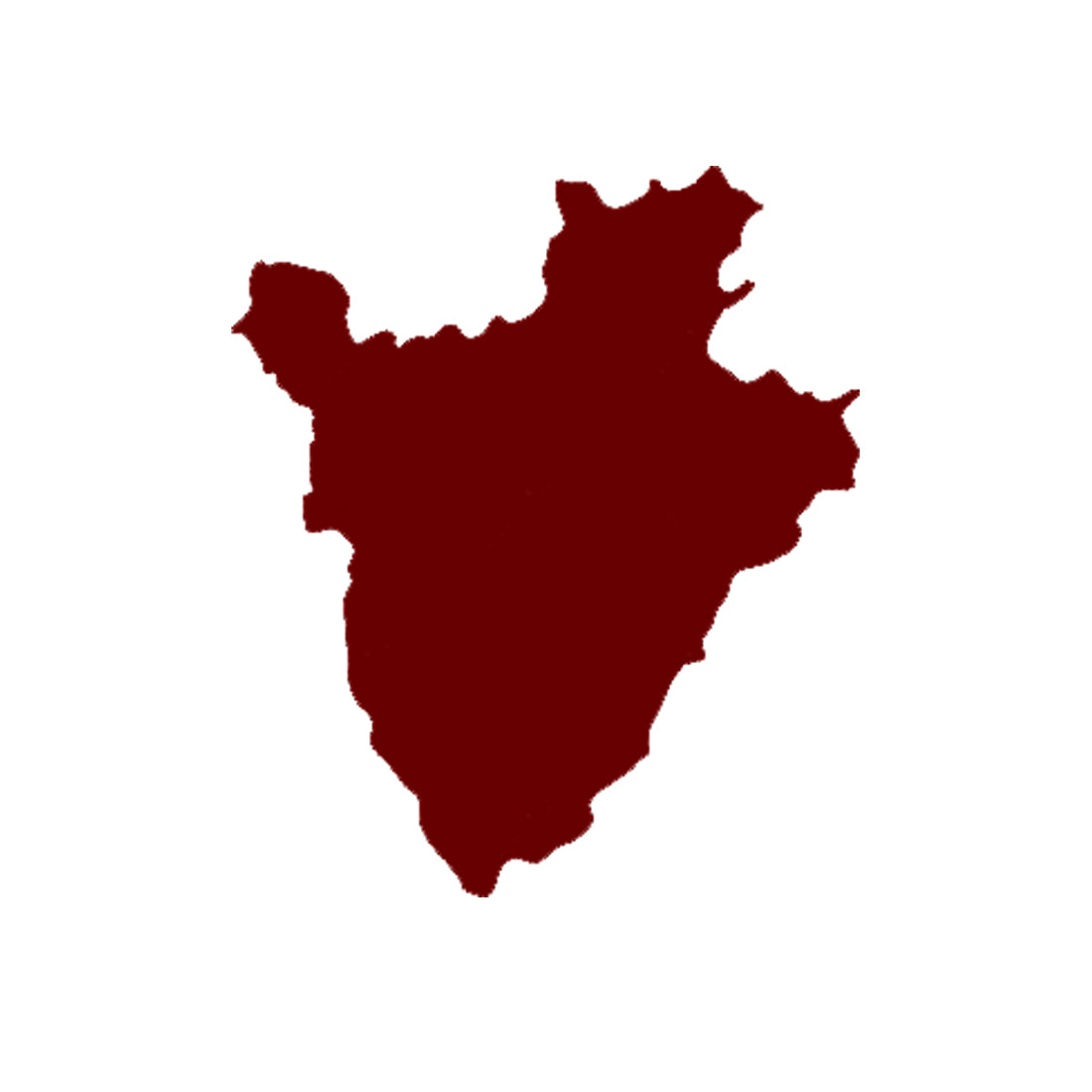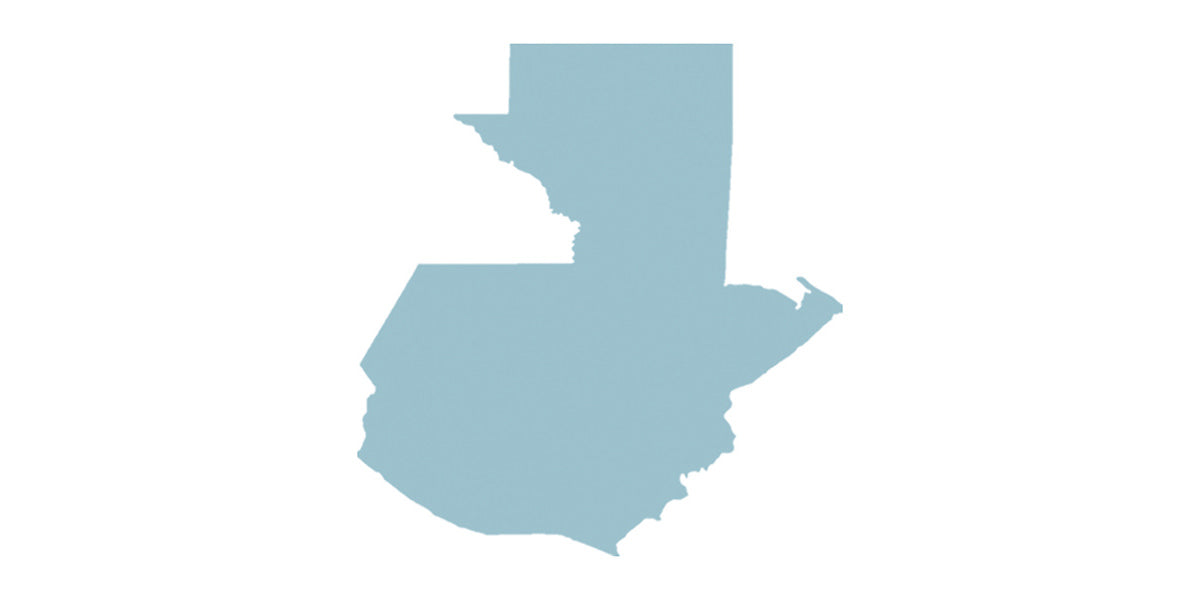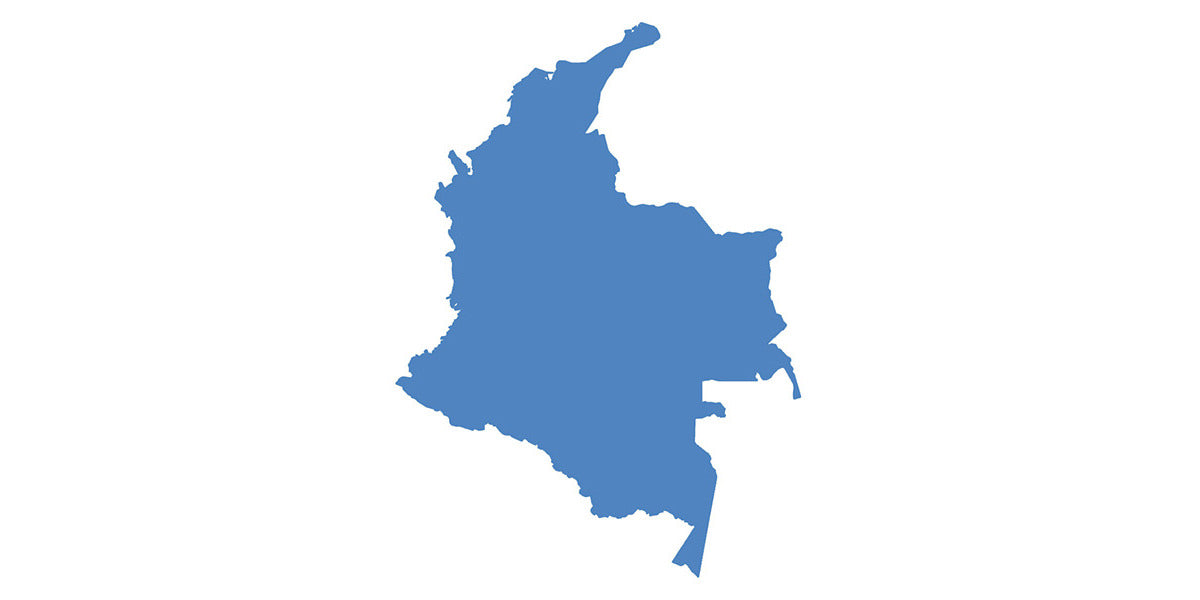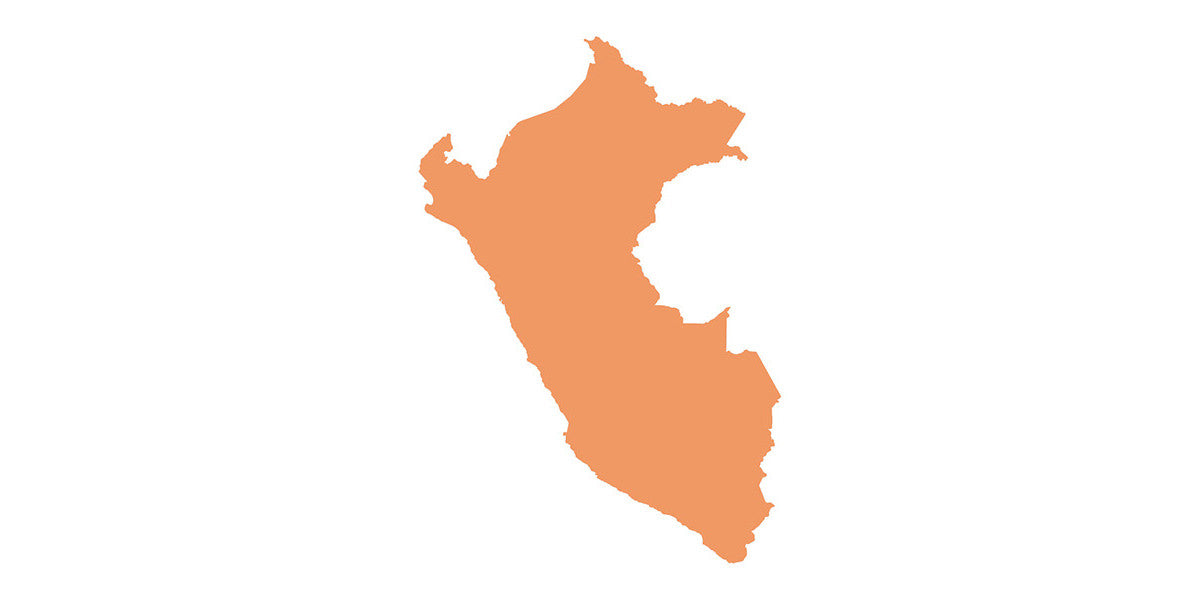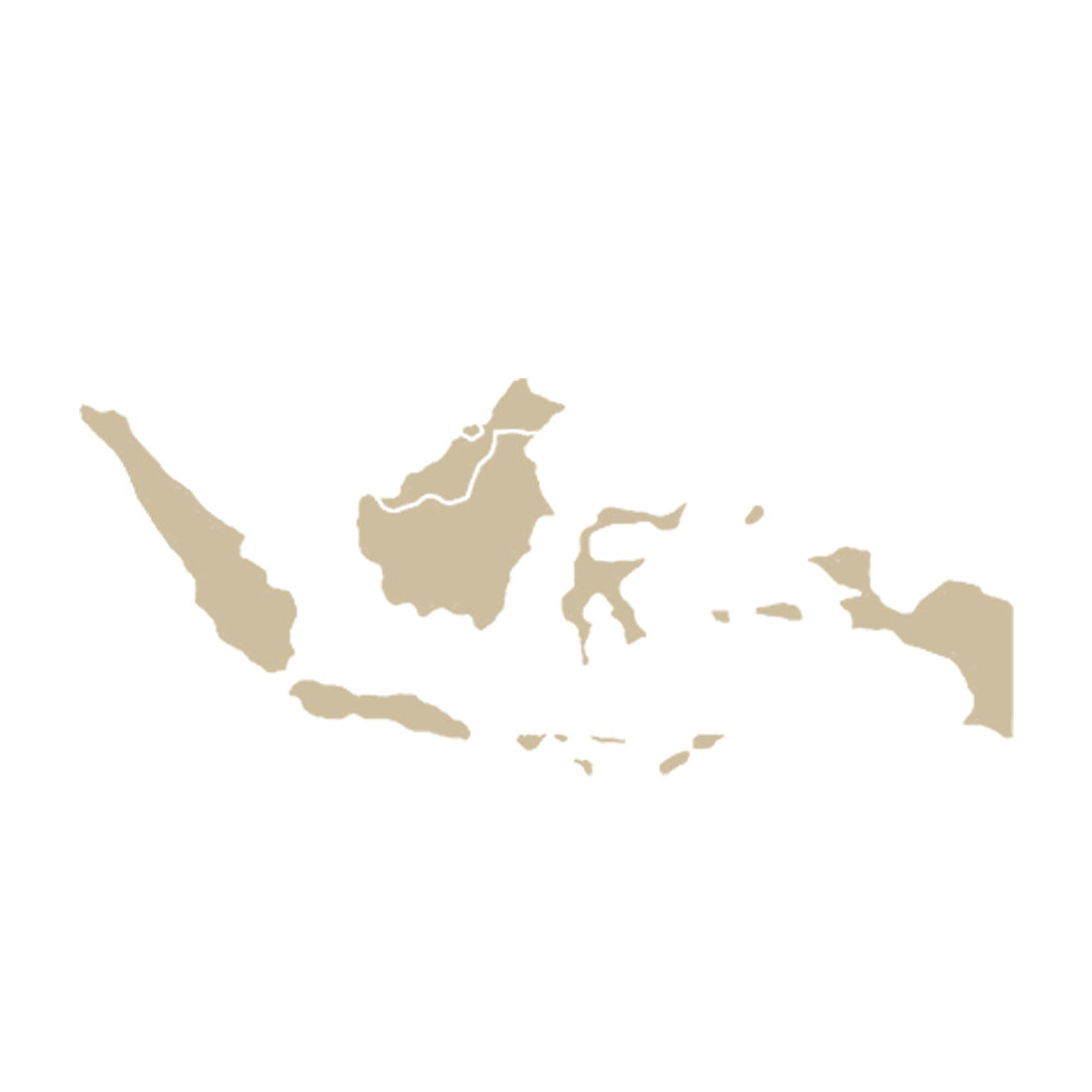Which country does my coffee come from?

Africa
The cradle of coffee
Ethiopia , considered the cradle of coffee, is in fourth place in the ranking of coffee producers with 460,000 tons of annual production. This is particularly surprising considering that in Ethiopia coffee is typically grown in small and tiny plots as so-called forest or garden coffee. It is very rare to find the highly professional, large farms with their own washing stations that are typical of other growing countries. The coffees grown and harvested by small farmers are therefore processed together with the coffees of other farmers in cooperatives - it is this mixture that makes Ethiopian coffee unique. The growing regions of Sidamo and Yirgacheffe are rightly world famous - and at the same time at risk: rising temperatures and falling rainfall due to climate change are already causing major problems. In the future, up to 60% of cultivated areas will be at acute risk.
With an area of almost 28,000 square kilometers and a population of almost 28,000 square kilometers, Burundi is one of the small countries in Africa, also in terms of coffee growing area. You won't find large farms in Burundi, which is of course not a disadvantage when it comes to coffee quality. Burundi has ideal climatic conditions for growing coffee, the tropical, humid climate with sufficient rainfall, the mineral-rich volcanic soils and the ideal topography with plateaus of over 2000m allow the cultivation of high-quality, nuanced Arabicas. With an annual green coffee production volume of 1,630 tons, Burundi is a small producer, but despite the excellent quality of the coffee and the great expertise of the coffee farmers in terms of processing, it is still an insider tip.
Uganda , with an area of 241,000 square kilometers only a fifth the size of Ethiopia, produces 300,000 tons of coffee annually, two thirds of the Ethiopian quantity. The main share, around 80%, is Canephora (botanically incorrectly usually called Robusta), only 20% of Ugandan coffees are Arabicas. Our Wugar Bukonzo from the Rwenzori Mountains, which is also certified organic, shows that balanced, cleanly processed Arabicas are also produced in Uganda.
With around 47,500 tons of green coffee produced annually, Kenya is one of the small producers and, in contrast to Ethiopia, for example, does not have a very long coffee tradition. Only introduced by the British at the beginning of the 20th century, coffee still lives in the shadows among the local population. People prefer to drink tea; coffee is produced almost exclusively for export. Luckily, you could say, because Kenyan coffee is rightly considered one of the best in the world. Its complexity and the typical notes of blackcurrant and blueberry make Kenyan coffees the trend coffees of the third-wave community and are an integral part of specialty coffee stores.
our recommendation
Product

Central America
Diversity and variety
From Mexico to Costa Rica: numerous varieties, diverse growing conditions and different processing philosophies guarantee an exciting variety of different flavor profiles.
As the largest country in Central America, Mexico is only in the middle range of producers with 400,000 tons of green coffee. Nevertheless, our coffees from Finca Hamburgo are among the best the market has to offer.
Guatemala is almost on par with 380,000 tons annually, and the trend is rising.
With a good 800,000 tons annually, Honduras is the top dog among the Central American countries. Due to large fluctuations in quality, excellent sourcing of green coffee is particularly important. They certainly do exist, the pearls from Honduras.
El Salvador : the smallest producer 74,000 tons) with probably the most difficult political conditions. Here Andres Quintanilla produces his top coffees on special, iron-rich clay soils. We have a Bourbon Tekisic and a Centroamerica from Andres on offer.
Like El Salvador and Honduras, Nicaragua is still suffering from the effects of the civil war in the 1980s, but like Honduras it is one of the coffee boom countries in Central America and has an annual production of 250,000 tons. This corresponds to an increase of over 400% (compared to the 1990/91 harvest season). You can now also find perfectly prepared specialty coffees in Nicaragua, such as our Los Placeres.
Costa Rica is the country in Central America with the longest coffee tradition - and perhaps the greatest overall expertise in cultivation and processing. Its varied topography and ideal soil conditions make Costa Rica an absolute hot spot not only for vacationers, but also for coffee lovers. Our El Orvo, a wonderfully exciting and at the same time balanced natural, illustrates this perfectly.
our recommendation
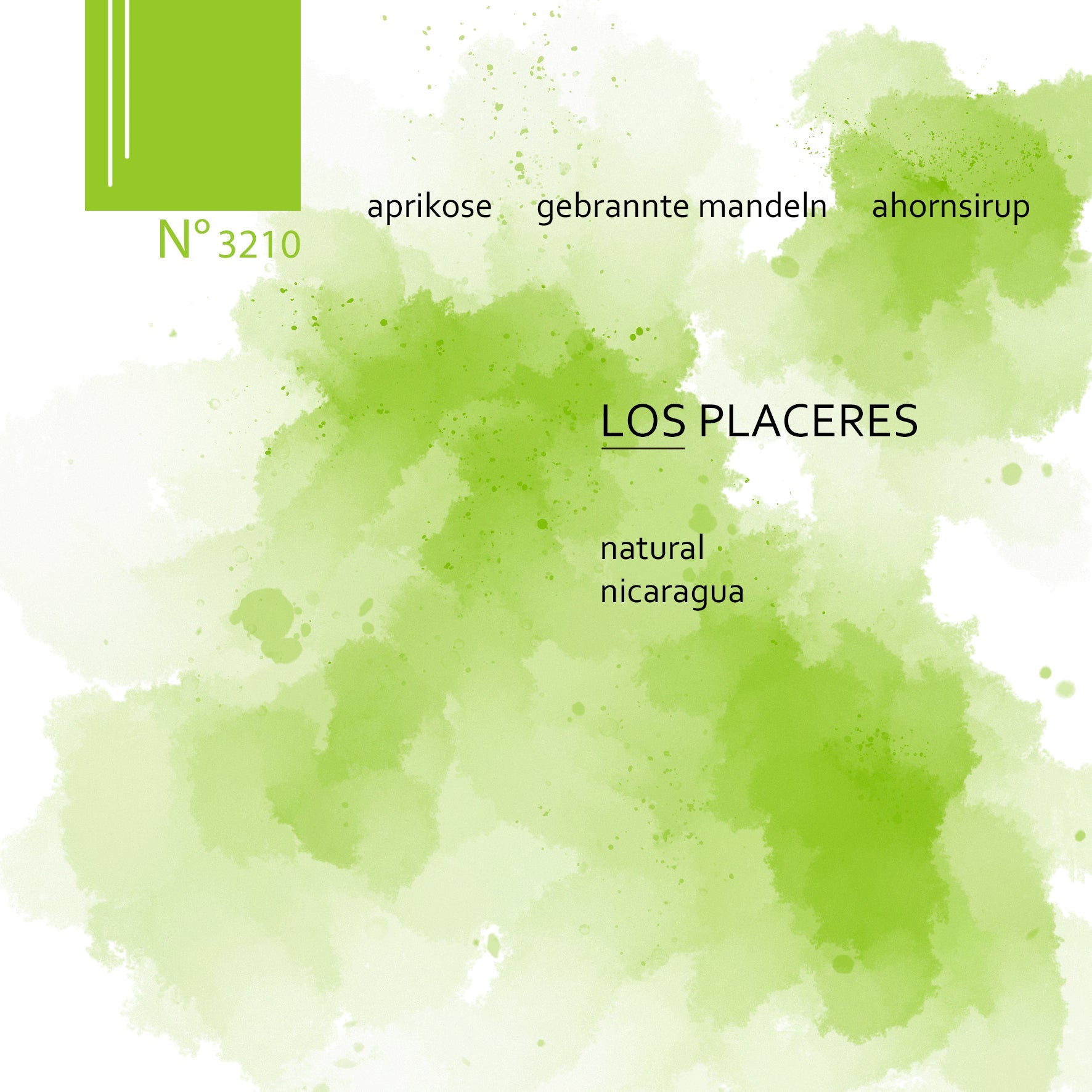
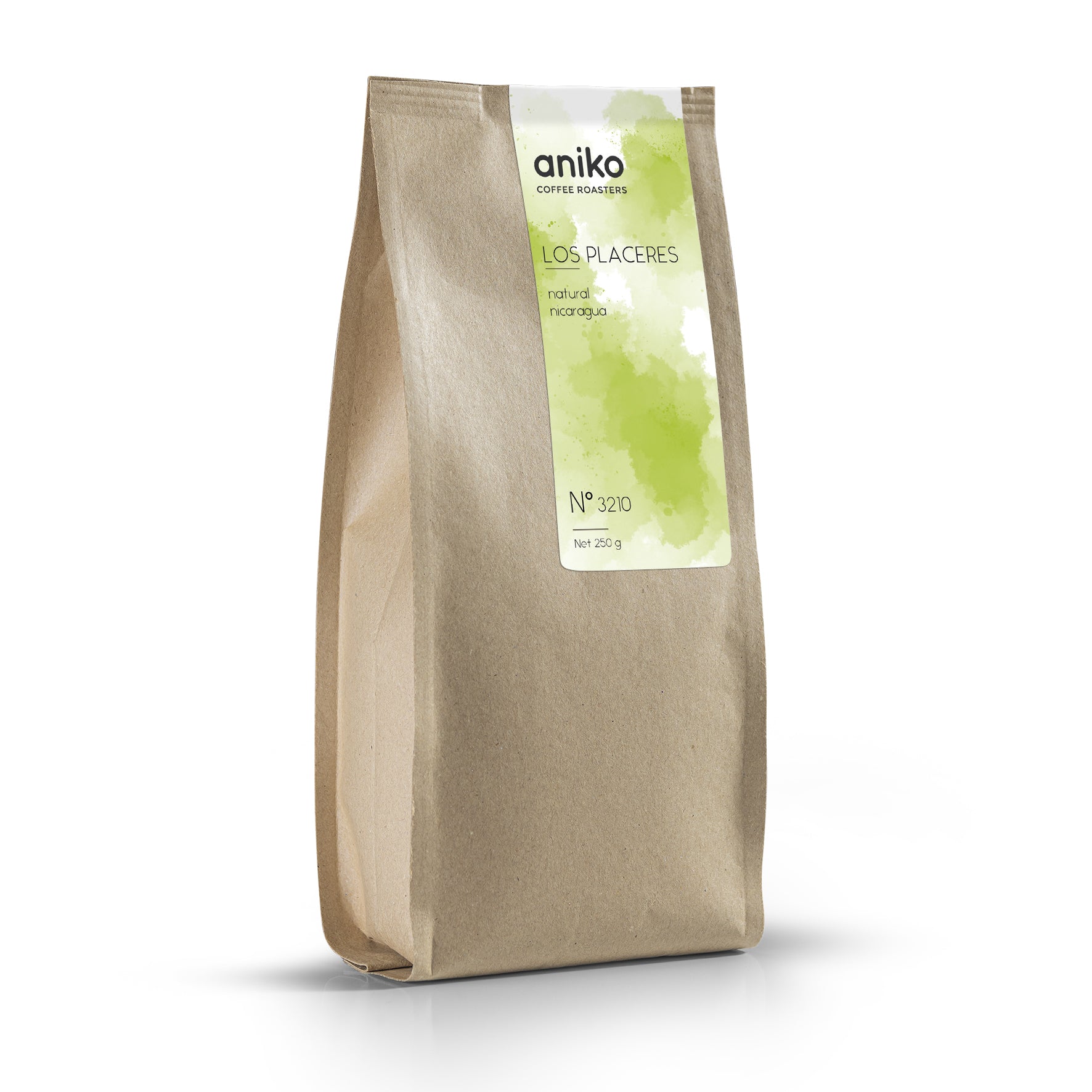
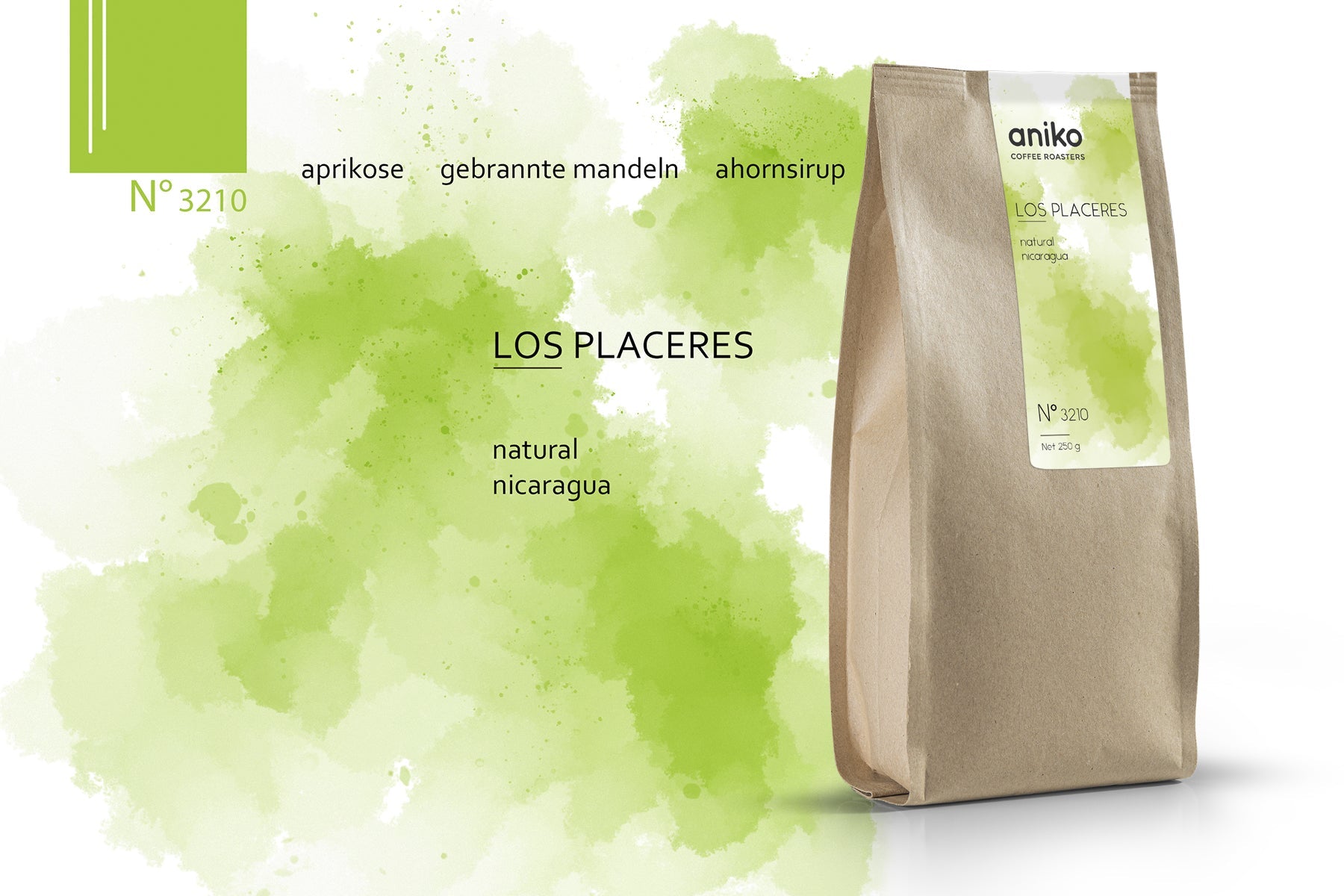
Los Placeres – Nicaragua – Natural
Los Placeres – Nicaragua – Natural
250 g
Bessunger Straße 53
Bessunger Str. 53
64285 Darmstadt
Germany
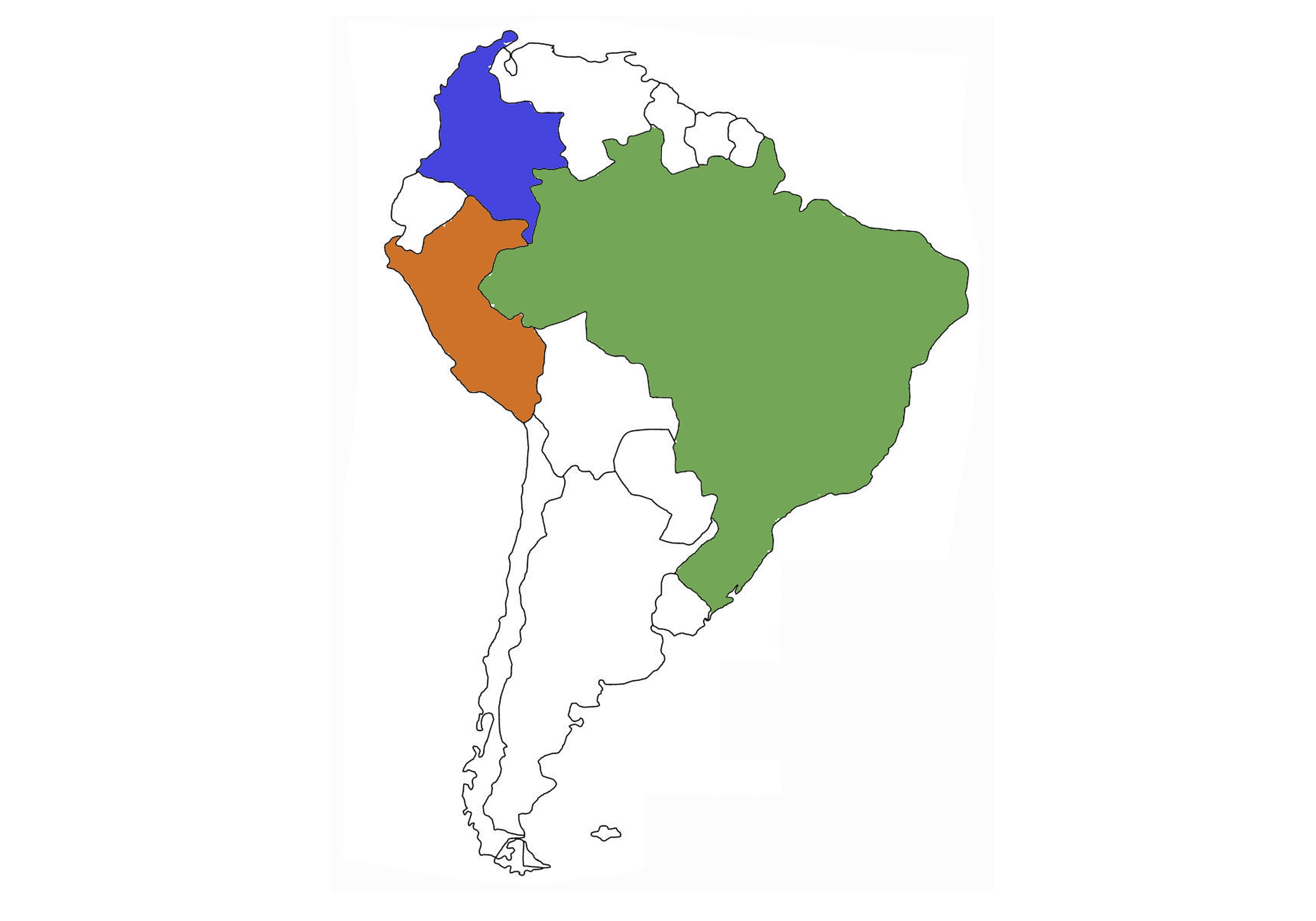
South America
Selected, hand-picked top coffees from small lots from Peru, Brazil & Colombia.
Brazil is by far the world's largest coffee producer (6,000,000 tons, which corresponds to 36.7% of the world's annual harvest). In Brazil you can often find industrially grown coffees; the use of pesticides and mechanical harvesting often have a negative impact on ecological diversity and coffee quality. But there are also an increasing number of farms in Brazil that are committed to the organic cultivation of specialty coffee, such as the Dutra brothers from the eponymous Facenda Dutra.
In Colombia, coffee has shaped the country's culture for over 300 years; with a production of 1,400,000 tons, the country is the third coffee producer after Brazil and Vietnam. Arabicas are mainly grown, such as our organic Caturra from the Regilon Tolima.
Peru: in the land of the Incas, the picture is dominated by small farms and a high proportion of organic coffee. Peru ranks 9th in the world with a production of 430,000 tons of green coffee, and the trend is rising rapidly.
our recommendation


Torre Taquara Preta – Brasilien – Pulped Natural
Torre Taquara Preta – Brasilien – Pulped Natural
250 g
Bessunger Straße 53
Bessunger Str. 53
64285 Darmstadt
Germany

Asia
Asia: exciting Canephora varieties from India & surprising Arabicas from Indonesia
India is world-famous as a tea country. Coffee production only really gained momentum in the 1940s with the founding of the Coffee Board of India. Today, with an annual production of 584,000 tons, India has a global market share of at least 3.1%. India is one of the few countries where both Canephoras and Arabicas and - in small quantities - Libericas are grown, which is possible given India's diverse climatic conditions. Due to the tropical conditions, typical of Indian coffee cultivation are plantations with shade trees (banana, fig, silver oak...) and plantations of spices such as cardamom, cinnamon or clove. The coffees of our farmer Deepak Chengappa with his high-quality Canephoras and Jakob Mammen, who also cultivates the rare Libericas alongside SLN9, Hibrido de Timor, Cavimor and others, reflect this diversity. In addition to coffee, we usually also offer highly aromatic spices, especially cardamom and pepper. In India, too, climatic changes, in particular the rising day-night temperature delta and the early and often more intense monsoon, are endangering coffee cultivation in the long term.
Indonesia is one of the big players in the coffee market and, with an incredible annual production of 690,000 tons of green coffee, takes 4th place in the list of the largest green coffee producers in the world behind Brazil, Vietnam and Colombia. Surprisingly, only 40-50% of production is exported, most of it to the USA. Indonesia is not necessarily known for growing exquisite and high-quality coffee, although there is a long coffee tradition dating back to the Dutch colonial period and good growing conditions. More than two thirds of production is made up of more or less inferior Canephora varieties, the quality and preparation of which cannot be compared with those of our Indian farms. But the proportion of Arabicas is increasing, which is also due to the relatively high personal consumption and the evolving coffee culture in the big cities. So you find them, the high-quality Arabicas, grown on small lots under ideal conditions, prepared to perfection and of incomparable complexity. When it comes to Indonesian coffees, perhaps even more so than in some other growing countries, it is important to look closely.
Our recommendation from Indonesia

aniko Coffee Roasters
Kampar – Indonesien – Honey Process
Kampar – Indonesien – Honey Process
Bessunger Straße 53
Bessunger Str. 53
64285 Darmstadt
Germany
